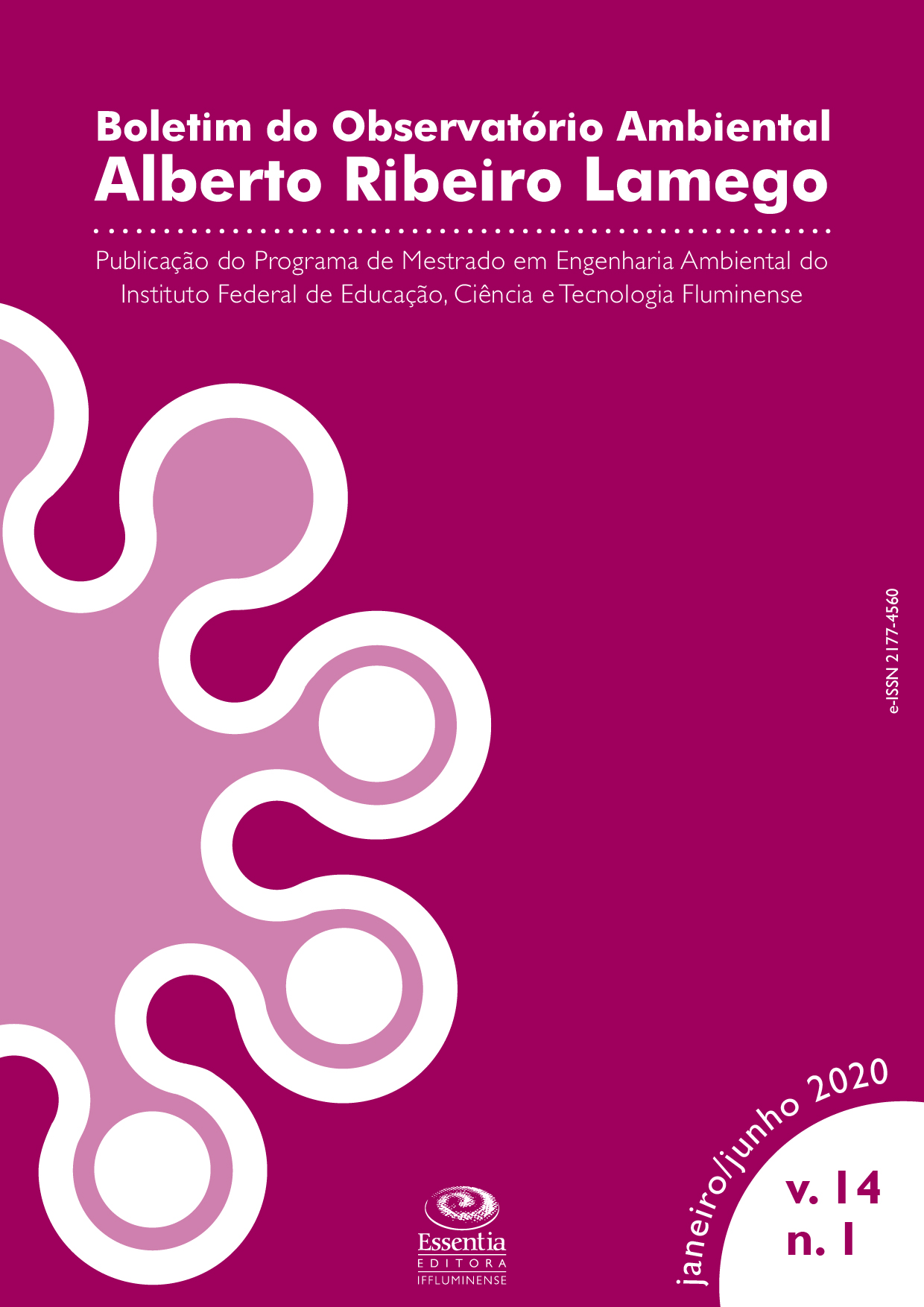Urban coastal lagoons subject to anthropic impacts via effluent input: general aspects and the concentration of methane in Lagoa Imboassica, Macaé, RJ
DOI:
https://doi.org/10.19180/2177-4560.v14n12020p81-97Keywords:
Methanogenesis, Sediment, Eutrophication, Organic matter, SewageAbstract
Coastal lagoons occupy 13% of the planet’s coast. In Brazil, they occur along the entire coast, with emphasis on the states of Rio de Janeiro and Rio Grande do Sul. Due to their geographic location, coastal lagoons are subject to several anthropic impacts. Multidisciplinary actions to mitigate these impacts are essential for changing the current conditions of coastal lagoons on the Brazilian coast. For this, it is necessary to have a better knowledge of the impacts caused and their consequences for the functioning of these ecosystems. Sewage input is one of the environmental impacts and is directly related to the increase in ecosystem productivity. In turn, the higher the aquatic productivity in lentic water, the greater the emission of methane into the atmosphere. In an effort to better understand the influence of eutrophication on the methane cycle, we analyzed the concentration of methane in the sediment in four regions of the Imboassica lagoon that have different environmental characteristics. In each region, 10 cm sediment cores were collected, which were subdivided into five 2 cm profiles. We analyzed the methane concentration in the sediment’s interstitial water in each profile. We observed that the lagoon regions influenced by the sewage supply had the highest concentrations of methane in the sediment. We conclude that sewage treatment is essential to mitigate eutrophication and, consequently, methane production in the ecosystem.Downloads
Downloads
Published
Issue
Section
License
The authors of the manuscript submitted to Boletim do Observatório Ambiental Alberto Ribeiro Lamego, hereby represented by the corresponding author, agree to the following terms:
The authors retain the copyright and grant Boletim do Observatório Ambiental Alberto Ribeiro Lamego the right of first publication.
At the same time the work is licensed under the Creative Commons Attribution 4.0 International License, allowing third parties to copy and redistribute the material in any medium or format and to remix, transform, and build upon its content for any legal purpose, even commercially, provided the original work is properly cited.
Authors will not receive any material reward for the manuscript and Essentia Editora will make it available online in Open Access mode, through its own system or other databases.
Authors are authorized to enter into additional contracts separately for non-exclusive distribution of the version of the work published in Boletim do Observatório Ambiental Alberto Ribeiro Lamego (eg, publish in institutional repository or as book chapter), with acknowledgment of authorship and initial publication in this journal.
Authors are permitted and encouraged to publish and distribute their work online (eg, in institutional repositories or on their personal page) at any point after the first publication of the article by Boletim do Observatório Ambiental Alberto Ribeiro Lamego.
Essentia Editora may make normative, orthographic and grammatical changes in the originals in order to maintain the standard language, with the final consent of the authors.
The content and opinions expressed in the manuscript are the sole responsibility of the author (s).










1.png)





